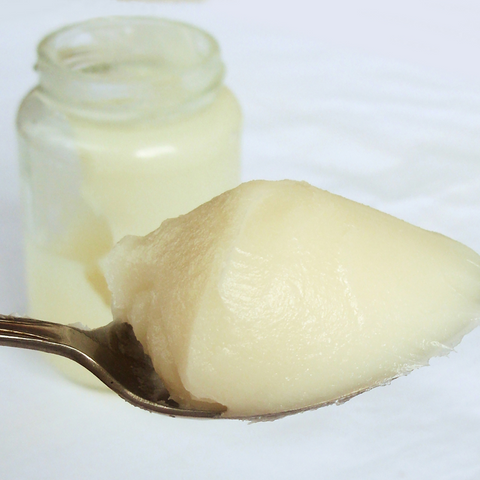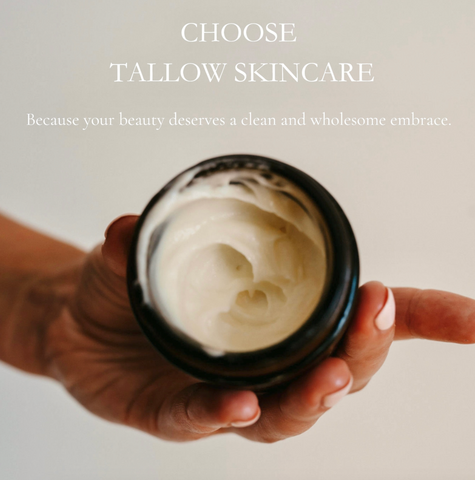Tallow Vs. Lard: What’s the Difference?

Tallow vs lard. What's the difference and which one is better? You’ve heard about tallow and lard but trying to figure out which one suits your needs can be confusing.
Both tallow and lard are rendered animal fats with rich histories in culinary traditions worldwide. Tallow is derived from beef fat, while lard comes from pork fat.
Let’s dive deeper into the characteristics of tallow and lard to determine which one might be the better choice for you.
1. What is Tallow?

Tallow is the rendered form of beef fat with a solid composition that becomes malleable at specific temperatures. The process of rendering involves boiling fatty tissue, followed by spinning it through a centrifuge to separate the fat from other liquid components.This meticulous process ensures the purity of the extracted fat, free from impurities and unwanted elements.
It's worth noting that a dry render on low heat is often considered superior to wet render with water and salt. Dry rendering reduces the chance of rancidity, as there's less moisture present, and it can result in a higher nutrient profile in the final product.
As for its composition, tallow comprises a blend of saturated, monounsaturated, and polyunsaturated fats. Common sources of tallow include beef suet, the fat that surrounds the kidneys in cattle, renowned for its richness and versatility in various culinary and industrial applications.
2. Beef Fat Vs. Suet
Confusion often arises when differentiating between the body fat of a cow and suet, particularly concerning the production of tallow.
Suet specifically refers to the dense, firm fat surrounding the kidneys and loins of cattle, and is known for its purity and rich flavor. In contrast, the body fat of a cow encompasses various fat deposits throughout its musculature and tissues, differing in consistency and melting point.
Suet's higher quality makes it the preferred source for rendering tallow, ensuring authenticity and superior results.
3. What is Lard?

Lard is rendered pork fat and comes from various parts of the pig, including the belly, butt, or shoulder. There are different types of lard, each with its own characteristics.
Rendered lard is the most common type, obtained by melting and filtering the fat.
Leaf lard, considered the highest quality, comes from a specific area near the pig's kidneys and is favored for its purity and superior texture, making it ideal for baking.
Processed lard undergoes additional hydrogenation for longer shelf life and a firmer consistency.
The process of rendering pork fat involves heating it to separate the fat from other components. This can be done with or without water, resulting in different textures and flavors. Rendered lard has a balanced composition of saturated and unsaturated fats, with saturated fats being the predominant type.
This gives lard its solid form at room temperature, making it versatile for various culinary applications.
4. What is the Difference Between Tallow and Lard?
The difference between tallow and lard include various factors ranging from their origins to their chemical compositions and applications.
We already know that they are sourced from different animals - tallow coming from beef fat, and lard sourced from pork fat. They also differ in their textures, tastes, and nutritional profiles.
The rendering process for beef fat and pork fat also varies, affecting the final characteristics of tallow and lard.
While both fats consist of a combination of saturated and unsaturated fats, the proportions differ, impacting their melting points and suitability for different cooking techniques. These differences ultimately influence their uses in culinary practices and other industries, highlighting the unique properties and versatility of each fat.
Here’s a more in-depth breakdown of the difference between tallow and lard.
Origins:
- Tallow: Tallow is derived from beef fat, typically sourced from cattle such as cows or sheep.
- Lard: Lard, on the other hand, comes from pork fat, usually obtained from pigs.
Textures:
- Tallow: Tallow tends to have a firmer texture, similar to solid butter or wax, especially when cooled.
- Lard: Lard is generally softer and more spreadable at room temperature, making it easier to work with.
Tastes:
- Tallow: Tallow has a richer, beefier flavor compared to lard, which can impart a distinctive taste to dishes.
- Lard: Lard typically has a more neutral flavor, making it suitable for a wide range of culinary applications without overpowering other ingredients.
Nutritional Values:
- Tallow: Tallow contains various nutrients such as vitamins A, D, E, and K, as well as conjugated linoleic acid (CLA) and omega-3 fatty acids.
- Lard: Lard is also nutritious, albeit slightly lower in vitamins compared to tallow. However, it is a good source of vitamin D.
Rendering Process:
- Tallow: Beef fat is rendered by heating it to separate the fat from other components, such as connective tissue and water.
- Lard: Pork fat undergoes a similar rendering process, but may involve additional steps such as hydrogenation for certain types of lard.
Chemical Composition and Melting Points:
- Tallow: Tallow consists primarily of saturated fats, with a higher melting point compared to lard.
- Lard: Lard contains a mix of saturated and unsaturated fats, resulting in a lower melting point and softer texture.
Let’s Look at the Different Uses of Tallow Vs. Lard
Cooking with tallow vs. lard:
Tallow: Tallow is commonly used in frying due to its high smoke point and rich flavor. It adds depth to dishes such as fried chicken, french fries, and vegetables. Additionally, tallow is prized for its contribution to baked goods, including pie crusts, biscuits, and pastries, where it provides a flaky texture and enhances flavor.
Lard: Lard is versatile in cooking and baking, adding moisture and tenderness to dishes. It's often used in traditional recipes like pie crusts, biscuits, and pastries, where it creates a light and flaky texture.
Skincare with tallow vs. lard:
Tallow: Tallow's moisturizing properties make it an ideal ingredient in skincare products such as balms, lotions, and soaps. Its similarity to the skin's natural oils allows for effective hydration and protection against dryness.
Lard: Lard has been used for centuries in skincare due to its emollient properties. It can be incorporated into homemade remedies like hand creams and lip balms to soothe and nourish the skin.
Industrial production with tallow vs. lard
Tallow: Tallow finds applications in various industrial sectors, including candle-making, where its high melting point and firm texture create long lasting candles. It is also used in the production of soaps, lubricants, and biofuels.
Lard: Lard has industrial applications similar to tallow, particularly in soap-making and lubricants. Its versatility and renewable nature make it a sustainable option for various manufacturing processes.
Tallow vs. Lard: The Wrap Up

Tallow and lard are BOTH versatile fats that are used in various culinary, skincare, and industrial applications. While they share similarities in their origins as rendered animal fats, they differ in terms of textures, tastes, and nutritional values.
Tallow offers a rich flavor and high melting point, making it ideal for frying, baking, and skincare uses. On the other hand, lard provides a neutral flavor and softer texture, also making it suitable for a wide range of cooking and skincare applications.
Is one better than the other? Both tallow and lard have their own distinct characteristics and are valued for different reasons.
Some may prefer the rich flavor and higher nutritional content of tallow, while others may prefer the neutral taste and versatility of lard.
Ultimately, the choice between tallow and lard comes down to personal preference, dietary considerations, and the specific requirements of the dish or application.
Experimenting with both fats can help you discover which one best suits your needs and enhances your culinary creations.
Are You Looking for Premium Beef Tallow Skin Care Products?

Look no further than Eternal Tallow, your trusted source for high-quality tallow-based skincare products! Based in Manitoba, Canada, we serve customers worldwide offering a wide range of premium tallow skincare products crafted from the finest beef tallow!
Our products are meticulously formulated to harness the nourishing properties of beef tallow, providing your skin with essential moisture and nutrients for a radiant, healthy complexion. From luxurious balms and cleansers to soothing soaps, our range of products cater to all your skincare needs.
At Eternal Tallow, we prioritize quality, sustainability, and customer satisfaction. We source our tallow from ethically raised cattle, ensuring the highest standards of animal welfare and environmental responsibility. Our products are free from harsh chemicals, artificial fragrances, and synthetic additives, making them suitable for even the most sensitive skin types!
Experience the difference that premium beef tallow skincare products can make for your skin. Shop Eternal Tallow today and indulge in the natural goodness of tallow for a truly transformative skincare experience.






